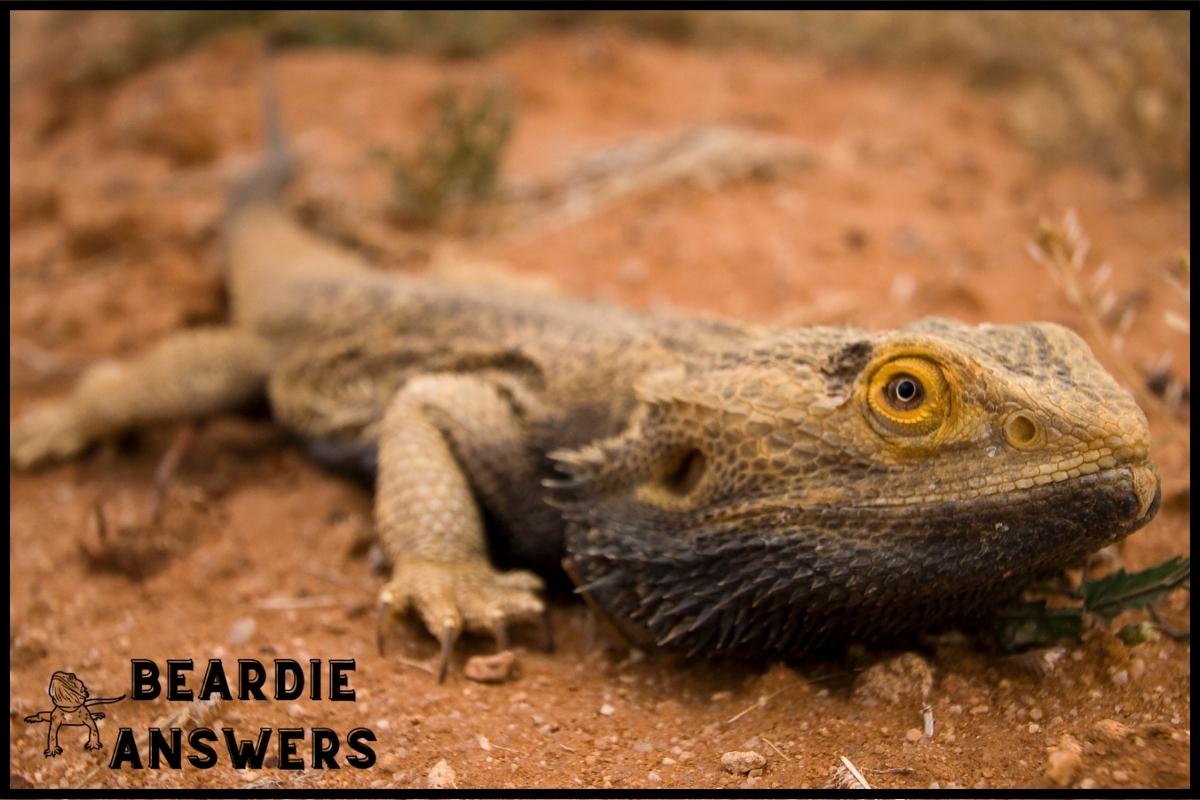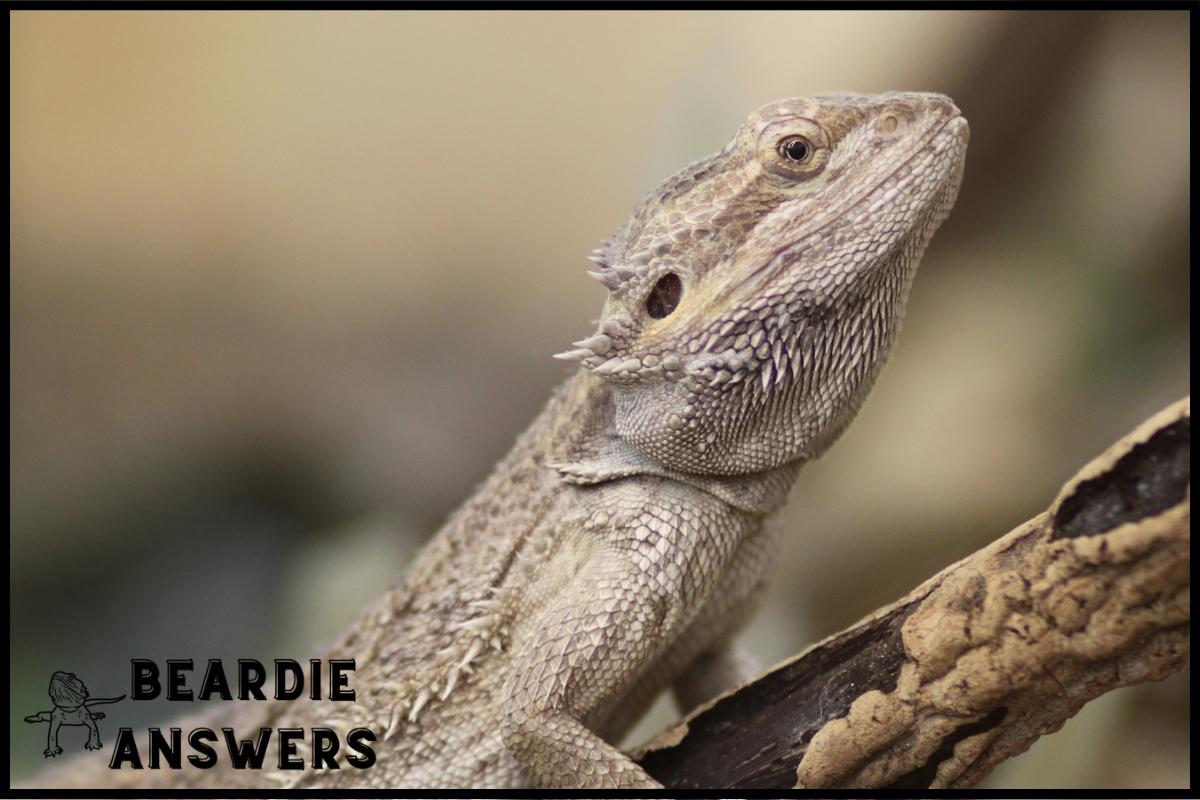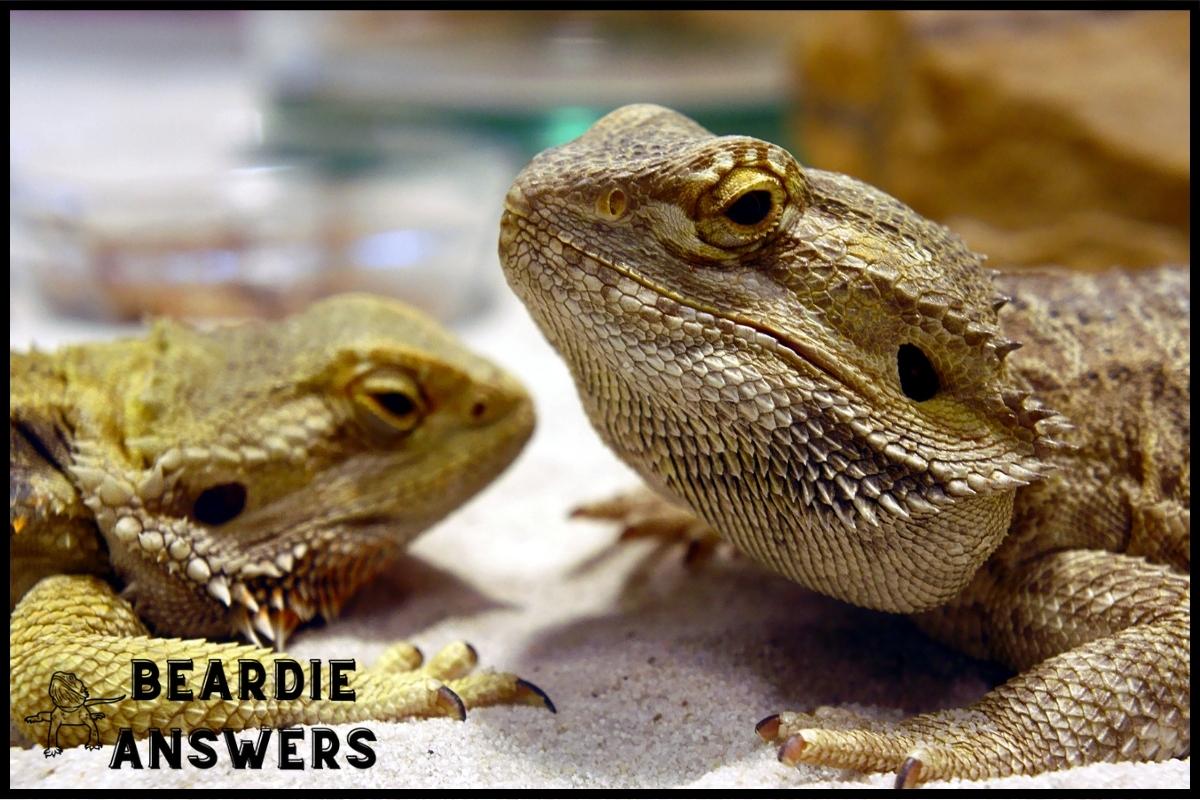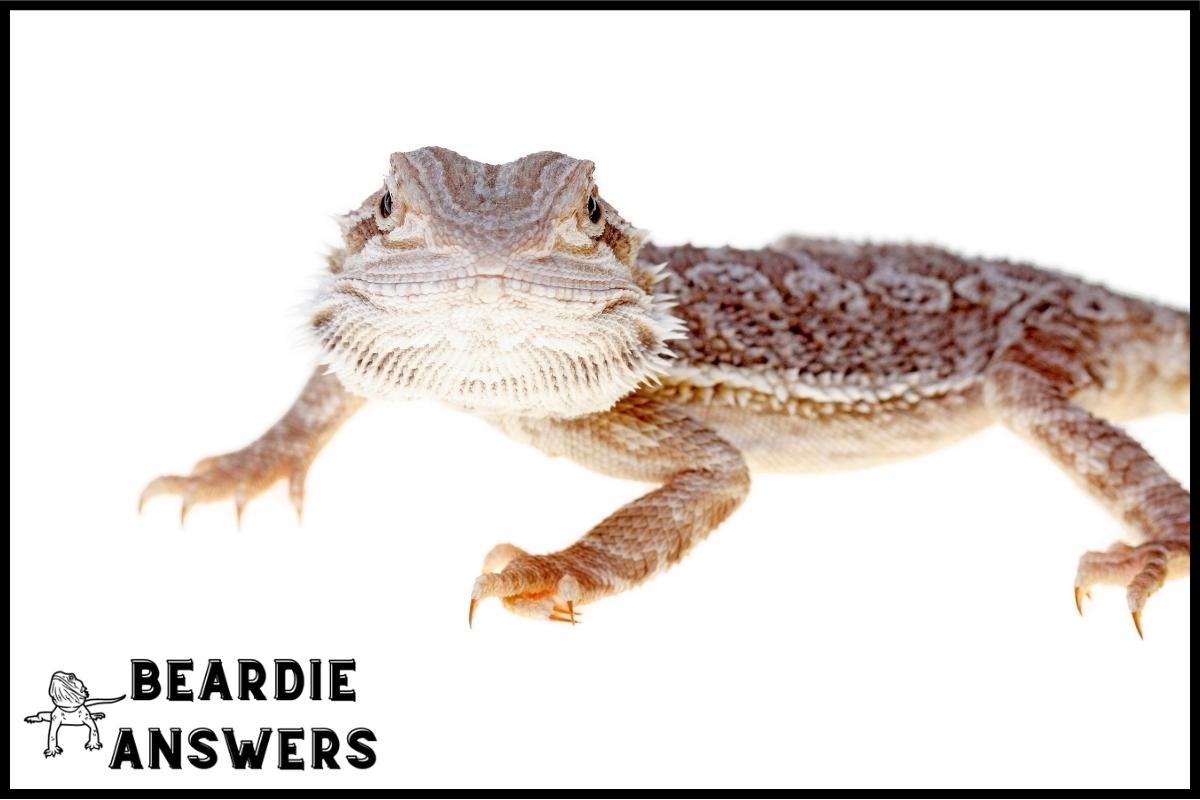[su_note note_color=”#eee”]
Bearded dragons are one of the most popular pet reptiles, and for good reason. They’re low-maintenance, easy to take care of, and can live up to 10-15 years in captivity with proper care.
But how does their natural lifespan compare?
In this article, we’ll explore just how long bearded dragons can live in captivity – as well as what factors influence their longevity.
Keep reading to find out more!
What You'll Learn
Species Overview
Bearded dragons are a type of lizard native to Australia. They make popular pets due to their manageable size and relatively easy care requirements, but owners must still provide them with appropriate temperature control, socialization needs, handling tips, enclosure sizes, and types in order for the animal to thrive.
In captivity, bearded dragons may require special UV bulbs or lights to maintain proper heating levels throughout their enclosures. Additionally, they will benefit from being handled regularly as long as it is done securely and gently. Lastly, it’s important that owners consider an appropriately sized habitat when caring for a bearded dragon—enclosures should be large enough to accommodate basking areas while also providing plenty of substrate space for digging and hiding.
With these basic needs met through diligent caretaking practices, bearded dragons can live up to 10-15 years in captivity. Moving on, understanding the natural habitat and diet of this species is key to creating a suitable environment at home.
Natural Habitat And Diet
Now that we have a better understanding of the bearded dragon, let’s take a look at their natural habitat and diet. Do they really prefer to live in hot deserts like Australia?
Bearded dragons are natively found throughout Australia and inhabit areas with warm climates. The temperature range for these animals is typically between 70-95°F (21-35°C). It’s important to provide them with the appropriate environment as stress levels can be significantly increased when temperatures are too extreme.
Their natural diet consists mainly of insects such as crickets, cockroaches, mealworms, and wax worms; although occasionally some fruits and vegetables may also be offered, depending on age and size. When selecting a habitat for your pet it’s important to consider enclosure size, substrate type, furniture, lighting fixtures, plants etc., so you can create an optimal living space for them.
Here are some items to keep in mind:
- Temperature Range: Maintain the correct temperature within their enclosure so they stay comfortable
- Natural Diet: Offer variety of insects suitable for their size
- Habitat Selection: Choose an adequate sized enclosure which meets all their needs
- Stress Levels: Monitor behaviour carefully to ensure they don’t become stressed out
It’s just as important to mimic the right environment inside our homes as much as possible in order to give our scaly friends the best quality of life! With this knowledge under our belt lets move onto discussing housing requirements…
Housing Requirements
Temperature is a key factor in providing a suitable environment for a bearded dragon, with temperatures ranging from 75-95°F being ideal. Humidity should be kept between 40-50%, while lighting should be UVB and UVA.
The size of the enclosure depends on the size and age of the dragon, but should generally be at least 48″x24″. A substrate of sand or paper towels is best, while filtration is also important to keep the enclosure clean. Decorations should be included to make the enclosure more interesting, and ventilation should be available to provide a proper airflow.
Shade should be provided to ensure the dragon can cool down, as well as hiding spots for the dragon to feel secure. Heating sources such as a basking light should also be used. Safety is especially important when making an enclosure for a bearded dragon, in order to prevent any accidental injuries. Cleaning should be done regularly to keep the enclosure healthy and hygienic.
Décor should also be used to make the enclosure more visually appealing. Accessories such as reptile caves and branches should also be included to provide the dragon with more opportunities for exercise.
Temperature
Ensuring the temperature of your bearded dragon’s habitat is a crucial part of providing proper care.
The optimal range for them should be between 75-90 degrees Fahrenheit, and you can easily monitor this with a thermometer.
In order to maintain their ideal environment, they need both UV exposure and heat lamps to control their body temperature.
This will ensure that they have enough warmth during the day and cooler temperatures at night, mimicking the natural conditions in which they would live in the wild.
With all these factors combined, you’ll be able to provide your pet with an environment hospitable to its needs!
Humidity
Now that you understand the importance of temperature control, it’s time to discuss humidity levels in your bearded dragon’s habitat.
The optimal range should be between 25-40 percent and can again be monitored with a thermometer or hygrometer.
Keeping this level consistent is important as too much moisture can cause bacterial growth and respiratory infections.
In order to achieve proper humidity levels, misting the cage may help, but make sure not to overdo it!
Additionally, the size of their cage should be considered when trying to maintain these conditions; larger cages will require more attention for both heat and humidity than smaller enclosures.
With all of these factors taken into account, you’ll find that your pet has an environment tailored specifically for them!
Lighting
Now let’s talk about lighting.
UV exposure is essential for bearded dragons, as it helps them absorb calcium and other nutrients from their diet.
In the wild, they’d naturally get plenty of sun-based UVB light but in captivity you need to provide adequate levels with a special bulb designed specifically for reptiles.
These bulbs should be changed every 6 months to ensure that your dragon is getting enough coverage.
Along with proper tank temperatures and dietary diversity, having access to this type of light will keep your pet happy and healthy!
Health And Grooming
Good health and grooming practices are essential for the long-term care of bearded dragons in captivity.
Regular vet visits to ensure their health, temperature control of their enclosure, hygiene maintenance of the environment, appropriate nutrition choices and gentle handling techniques should all be considered.
Setting up a good routine for your pet will help them remain healthy throughout their life with you.
It’s also important to remember that there may be times when extra medical attention is needed due to any number of conditions or incidents.
In such cases it’s best to follow the advice given by veterinarians who specialize in reptiles so they can get back on track quickly.
With proper care and preventive measures, your dragon should enjoy many years as part of your family.
As mentioned earlier, bearded dragons can live anywhere from 10-15 years in captivity if their needs are properly met.
Knowing how to provide these fundamentals gives an owner peace of mind knowing that they can do everything possible to give their pet a happy and fulfilling life.
Average Lifespan
Aging factors can have a significant impact on the average lifespan of a bearded dragon. Diet considerations should also be taken into account to ensure a long, healthy life.
Aging Factors
Aging factors can heavily influence the average lifespan of a bearded dragon in captivity.
Socialization, exercise needs and dietary balance are all key elements that need to be taken into account when caring for these reptiles.
Inadequate social interaction can lead to stress-related health issues while an unbalanced diet or lack of exercise can cause nutritional problems and physical immobility.
It is important to provide adequate care throughout their life span in order to ensure they live as long as possible.
Therefore, providing your bearded dragon with plenty of love, a balanced diet, access to safe outdoor areas for them to move around freely and regular trips outdoors will help keep them healthy and happy for many years.
Diet Considerations
Once you’ve got their social and exercise needs sorted, the next consideration is diet.
It’s important to select a diet that meets your bearded dragon’s nutritional requirements as well as provide variety in food selection.
A varied diet should include both live insects and vegetables, supplemented with commercial diets like pellets or crickets.
You may also want to consider providing supplements to ensure they get adequate vitamins and minerals.
Getting the right balance of proteins, fats, carbohydrates, vitamins and minerals will help keep them thriving for many years.
With careful dietary considerations, your pet can stay healthy for its entire life!
Factors Affecting Lifespan
The average lifespan of a bearded dragon in captivity is 10-15 years, but there are many factors that can influence how long your pet will live for.
While it’s ideal to provide them with the best possible care, sometimes circumstances prevent us from doing so – and this could mean the difference between a short life or a longer one.
When it comes to their health, good exercise habits and temperature regulation are essential for keeping your beardie happy and healthy.
A varied diet also plays an important role; without enough variety you may find yourself dealing with nutritional deficiencies which can have serious consequences on their wellbeing.
Additionally, stress levels should be kept low by ensuring they have plenty of time out of their enclosure as well as regular veterinary visits.
It’s clear that providing proper care is key when wanting to ensure your pet lives its fullest potential.
With thoughtful consideration and correct husbandry practices, you’ll be able to give your beloved companion the longest possible life in captivity.
Conclusion
It’s incredible to think that a pet like the bearded dragon can live up to 10-15 years in captivity. With proper care, you could have a loyal companion for decades!
As we’ve seen, there are several factors that can affect how long your pet lives. From diet and housing requirements to health and grooming, it’s important to be aware of all these needs when caring for your reptile friend.
Of course, it goes without saying that providing love and attention is just as vital as meeting their physical needs. By understanding what they need from us, we can give them the best possible chance at living a full and happy life with us.
After all, nothing beats watching our scaly pal grow older each year! Ultimately, it’s clear that if you take good care of your bearded dragon then they will reward you with many years of companionship.
To ensure their longevity, make sure to keep up on their individual needs so you can enjoy them for as long as possible!

Hi! My name is Bryan, I am the “one behind the words” here are BeardieAnswers.com. I believe that providing quality care and nutrition is the best way to ensure the health of your pet. Every beardie is special and deserves the best care and attention. If you have questions about your bearded dragon, please don’t hesitate to ask! View My Full Author Page




